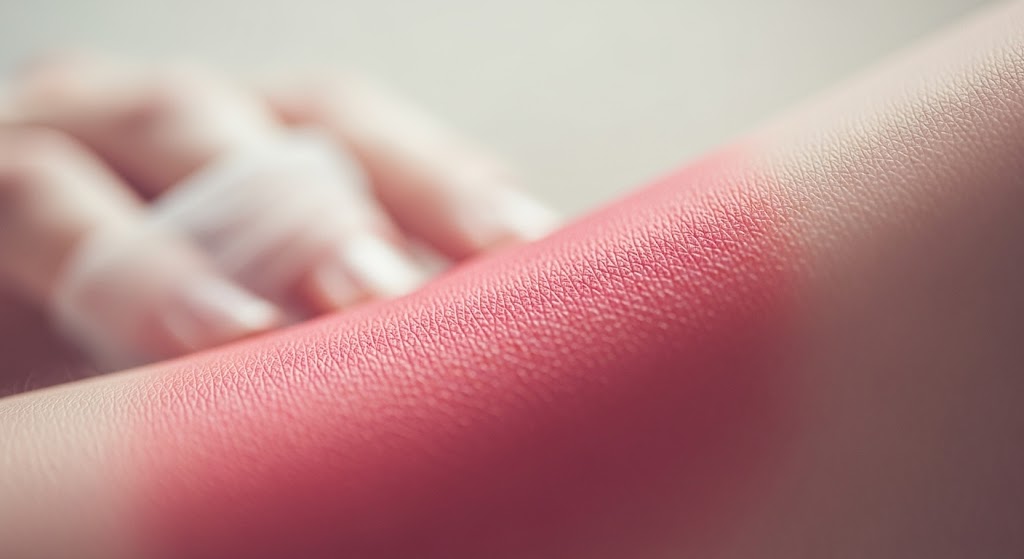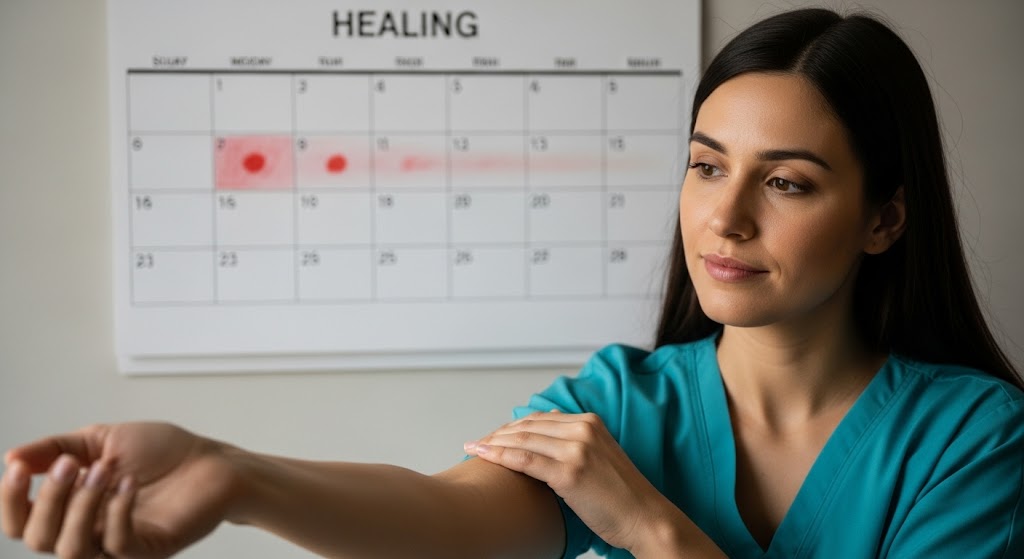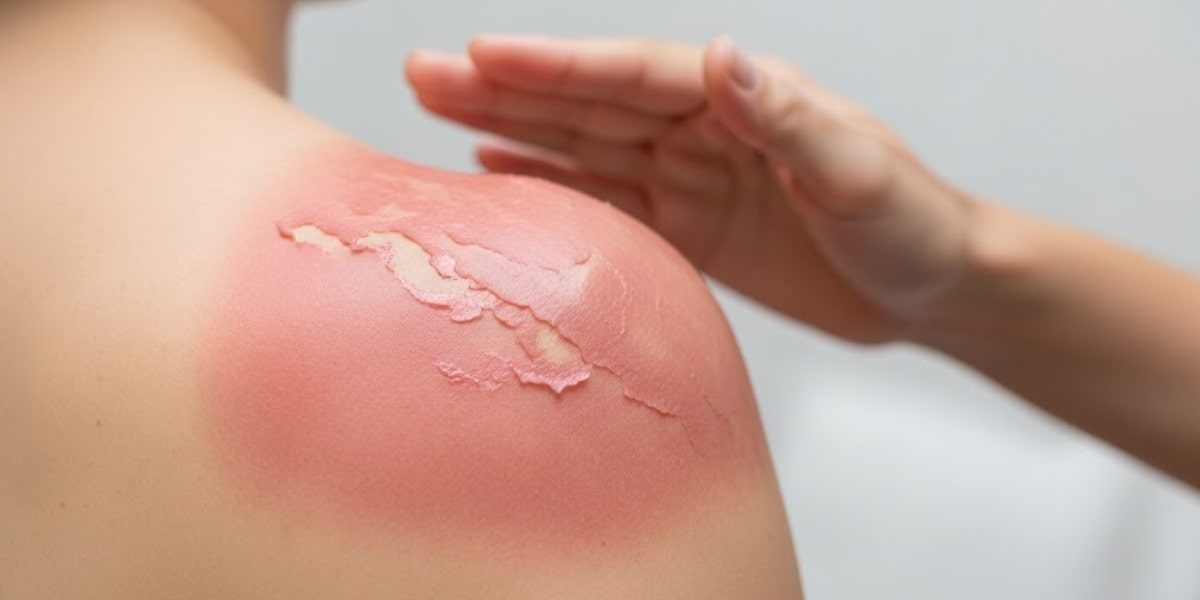Mixing physical intimacy with a burn or sunburn can create more harm than expected. When the skin is already damaged by heat or UV exposure, even minor friction or pressure can lead to intense discomfort, prolonged inflammation, and in some cases, open wounds or infection. Overlooking the risk simply because the pain feels manageable can turn a short encounter into a longer healing process.
Sexual activity should be avoided if the skin is blistered, peeling, swollen, or irritated due to any form of burn or sunburn. Waiting until the skin has healed not only prevents infection but also protects against further injury that could leave lasting scars or skin sensitivity.
This guide will walk you through the physical effects of burns on the skin, how intimacy interferes with recovery, and the signs that indicate it's safe to be active again. Knowing when to pause can make all the difference if skin damage is involved.
Should You Skip Sex with a Burn or Sunburn: What Happens When Intimacy Meets Skin Damage

When a burn or sunburn compromises theskin, even light touch can become painful or harmful. This article breaks down the hidden risks of engaging in sex while your skin is inflamed or healing.
By understanding how your body reacts to injury, you can make safer, informed decisions about when to pause or resume intimacy.
Why Skin Damage Changes the Rules of Intimacy
The skin acts as your body’s first line of defense. When it's injured due to a burn or sunburn, its protective barrier is broken. This means even simple actions like pressure, friction, or contact with bodily fluids can irritate the area, leading to more severe inflammation or infections.
- Friction from sexual activity can worsen redness, blistering, or peeling.
- Sweat and body heat can trap bacteria in the damaged skin, increasing infection risk.
- Delayed healing is common when irritated skin is exposed to constant movement or moisture.
Ignoring these risks may result in complications that require medical attention. If discomfort or visible skin damage exists, intimacy should be delayed.
The Risks of Sex with a Burn
Engaging in sex with a burn, even a minor one, is often underestimated. Thermal burns—whether from heat, hot objects, or steam—damage the skin in layers. Depending on the depth of the injury, the area may be raw, highly sensitive, or at risk for scarring.
- First-degree burns may appear red and tender, but still pose sensitivity issues.
- Second-degree burns include blistering and are prone to tearing or infection during physical activity.
- Third-degree burns require medical supervision, and intimacy should not resume without explicit clearance.
Sex should be avoided until all visible signs of the burn have healed. If pain, tightness, or peeling persists, the skin is not ready for physical contact.
The Added Dangers of Sunburn and Intimacy

A sunburn might not seem as serious as a thermal burn, but the risks during intimacy can be just as significant. UV exposure disrupts the skin’s ability to retain moisture and fight bacteria. During sex, this fragile condition can worsen quickly, especially in high-friction areas.
- Mild sunburns can sting with a light touch, making sex uncomfortable and counterproductive.
- Severe sunburns with blistering or widespread redness increase the risk of infection when exposed to sweat or other fluids.
- Contact during healing can lead to uneven pigmentation or long-term sensitivity in the affected area.
Allowing skin to recover fully reduces both discomfort and medical risks. Remember that sunburned skin is more porous and vulnerable, meaning even brief contact can cause setbacks in healing.
Signs You Should Definitely Skip Intimacy
Not all skin reactions are obvious, but there are clear warning signs that signal it’s best to wait. If any of the following are present, sex should be skipped until the area is fully healed:
- Peeling or flaking skin
- Visible blisters or open wounds
- Persistent redness or swelling
- Pain upon touch or movement
- Scabbing, raw patches, or oozing
Engaging in intimacy too early can lead to secondary infections, skin tearing, and longer healing times. These symptoms are your body’s way of telling you it’s not ready for physical stress.
How Long Should You Wait Before Resuming Sex?

Recovery time varies based on the severity of the burn or sunburn, but general guidelines help determine when intimacy is safe:
- Wait at least 3–5 days after symptoms subside for mild burns or sunburns.
- For moderate to severe burns, wait until complete healing occurs and no tenderness remains.
- For burns involving blisters or broken skin, consult a healthcare provider before resuming any sexual activity.
Returning to intimacy too soon can reverse healing and cause long-term sensitivity ordiscoloration. Always listen to your body. If unsure, it’s better to wait.
Protecting Sensitive Skin During Healing
If you're recovering from a burn or sunburn but still want physical closeness, consider these safe alternatives to maintain intimacy without risking your skin:
- Focus on non-contact forms of affection, such as verbal intimacy or emotional bonding.
- Use soft fabrics, cool environments, and avoid heat exposure during recovery.
- Maintain proper skin hydration using dermatologist-approved lotions or aloe vera gels.
- Wear loose, breathable clothing and avoid any area that feels sore or inflamed.
Healing takes time, and protecting your skin now prevents bigger problems later. Mutual understanding and patience help ensure both partners feel respected and safe.
Why Skipping Sex Isn’t a Setback, But a Smart Move
Many people fear that delaying sex after a burn or sunburn will affect their relationship or intimacy. In truth, caring for each other’s health often deepens emotional bonds. Respecting physical limits, especially during recovery, reflects maturity and mutual concern.
- Skipping sex allows the skin to heal properly without stress or irritation.
- It avoids unnecessary pain and the risk of spreading bacteria.
- It builds trust between partners by prioritizing safety and long-term comfort.
This temporary pause isn’t a rejection—it’s a responsible choice that protects your health and connection with your partner.
Conclusion
Skin damaged by a burn or sunburn is far more delicate than it appears. Sexual activity during healing can worsen inflammation, delay recovery, and create long-term skin issues. By understanding how intimacy impacts injured skin, you’re better prepared to make safe, respectful decisions. When in doubt, skipping sex until complete healing is always the safer option. Prioritizing recovery now means a quicker, more comfortable return to intimacy later.
Let your body heal—because comfort, safety, and health always come first.
FAQs
Yes, physical exertion during sex can raise your internal body temperature, which may aggravate inflamed or sunburned skin. This increase in heat can intensify discomfort and potentially delay the cooling and healing process.
Most lubricants, especially those containing warming agents or fragrances, can irritate sunburned skin. Oils can trap heat and bacteria, potentially worsening inflammation or causing clogged pores.
Severe third-degree burns that involve nerve damage or scarring in sensitive areas may result in long-term changes to skin function, including reduced sensation or mobility. In such cases, a healthcare provider should advise on future activity.
Skipping intimacy temporarily has no negative impact on healthy relationships. Mutual care and communication during recovery often strengthen emotional bonds and demonstrate respect for physical boundaries.
Yes, sunburn in the genital or surrounding areas is more likely to lead to painful friction, skin cracking, or secondary infections. These areas are more delicate and should be monitored closely before resuming any activity.
Yes, some burn creams, steroidal ointments, or antibiotic treatments can thin the skin or increase sensitivity. It’s best to wait until you're no longer using topical medications before engaging in sexual activity involving the treated area.





